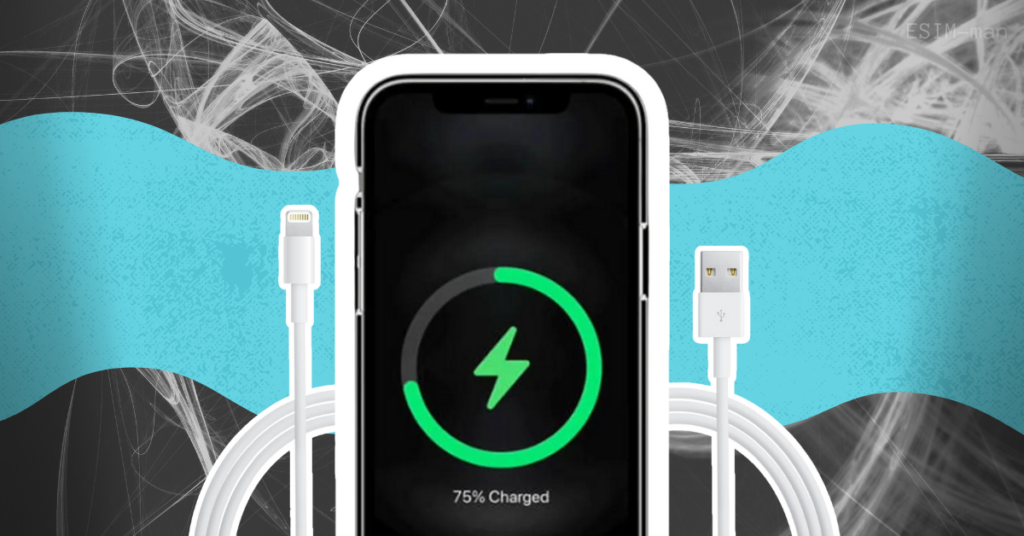Table of Contents
The first thing you hold in hand in the mornings and the last thing you check out before bed – this is a smartphone. Wherever you go, your mobile is always in your pocket. Smartphones and communication are constantly improving, and it’s a great thing! Developers are creating fantastic applications, software, releasing more convenient SIM cards, and more. As a result, new SIM card formats are appearing, making it difficult to choose the right one for your device. The newest types include eSIM and Nano-SIM. Compared to their predecessors they have the smallest format, and take up the least amount of space in your gadget.
I am going to talk about how eSIM and Nano work. Let’s compare eSIM vs Nano SIM to clarify their differences and benefits. So, let’s start.
You may also be interested in: “ESIM vs Physical SIM: What’s the Difference?“
What is an e-SIM?
Many of us might be wondering — what is an eSIM and why should you try it? let’s find out. An eSIM, a built-in electronic card, is a virtual programmable option with the same functions as physical SIM: securely joins you with your network. It brings access to mobile services to apply your plan. Hence, to make it all work, a special electronic chip is placed inside the device. This allows users to change any mobile operator without replacing a card and connect up to 5 numbers to eSIM. This option is most popular in the United States, Europe, and other developed countries.

Speaking of the cellular connectivity field, eSIM is mainly used as:
- The component supports provisioning SIMs with a new OTA profile.
- The eSIM mobile factor gets embedded into the gadget.
These cards can be installed onto mobile gadgets online or via the app. They make your device convenient to use (besides using free internet or pretending to be your phone to avoid talking to others in public). Many believe eSIMs are the future of digital communication worldwide. To date, some models, like all iOS 14 devices, support exclusively electronic cards, while other gadgets (iPhone XR and iPhone SE) support physical cards and electronic chips.
What is a Nano-SIM?
This type is well-known as the 4th Form Factor. Nano is the 4-th generation of SIM cards. It is a small physical chip with gold-covered contacts that must be inserted into a unique mobile connector.
Nano is a minor SIM chip (coming in a physical form) launched in 2012. Externally, it looks like a small integrated circuit framed by a thin plastic frame. The nanochip is about 40% smaller than a standard 2 FF SIM. Its dimensions are only 12.3 x 8.8 x 0.67 mm, but at the same time, in terms of data volume and functionality, it is not inferior to more “dimensional” mobile cards. Nowadays, most mobile phones and other devices come with a Nano slot.

The differences between Nano SIM and eSIM
To understand which card to take, first, let’s figure out the eSIM vs Nano SIM differences:
| Features | Nano SIM | Embedded SIM |
| Form Factor | Physical card measures 12.3 mm × 8.8 mm × 0.67 mm | Built-in chip in the device that can be programmatically activated |
| Installation | Installed in the SIM card slot in the device | Doesn’t require installation and can be activated via device |
| Number of devices | You can only use it on one device | Сan be connected to multiple devices and switch between them |
| Managing | Ability to control the connection using only a physical card | Allows you to control the connection to the mobile network via device |
| Use in different countries | You have to buy a new physical card in each country | More convenient for use in different countries, as you can easily switch mobile operators via the device |
eSIM and Nano SIM — Pros and Cons
To cover the basics, I will explain in depth so you can choose the card for your mobile device on your own. For simplicity’s sake, it will not be a complicated analysis. To discover the answer is esim better, let’s compare the benefits and drawbacks of both:
eSIM features
Pros:
- Owners can easily switch to their preferred operators without replacing a physical card;
- It is more economical as the device takes up less storage space;
- Roaming services will be cheaper;
- The card owner can have more than two phone numbers for one gadget;
- These cards eliminate the risk of damage or loss of physical cards.
Cons:
- There is a risk of hacking the cloud hosting the eSIM.
- Not all smatphones can support this format.
Nano-SIM features
Pros:
- People use it more often, and it’s easier to install;
- The given format helps to save a storage space;
- These carriers support six contacts instead of eight.
Cons:
- As this is a small one, in case you accidentally drop it, it’s hard to find;
- In case of loss, the number can be used from a duplicate card, but for this, you need to contact your telecom operator.
Summary
Modern SIM cards are useful options with advantages and drawbacks. The eSIM format lets you access the network without needing a physical chip, simplifying switching between operators and tariff plans. The right choice about esim vs nano sim depends on your needs.









